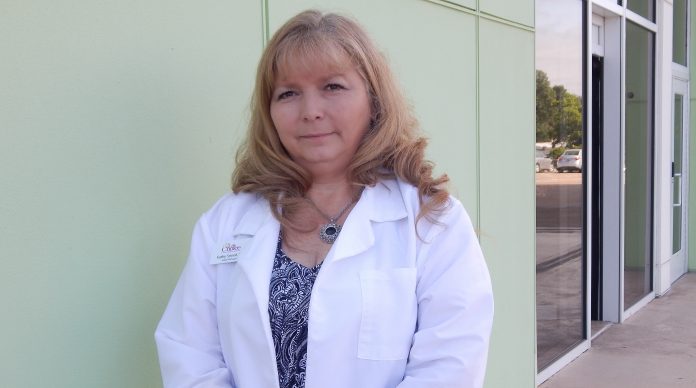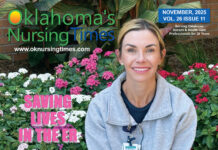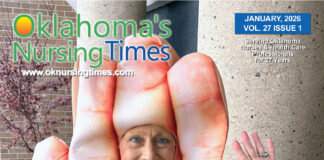
Life Choice Hospice provides the way
by James Coburn, Staff Writer
Years ago, hospice was not Kathy Sneed’s cup of tea, she said.
“I didn’t think I could deal with it because I worked in trauma for so long that it was hard. You had those patients that were dying,” said Sneed, RN, director of clinical care at Life Choice Hospice in Oklahoma City. “Most of the ones there resulted from traumatic accidents that obviously cost them their lives.”
Families didn’t have time to adjust to the shock of losing a loved one, she said. So it was hard to have to explain to a family that their loved one would not survive.
“From that, I always thought, ‘No. I just don’t think I could do hospice. Somebody is dying all the time.’”
She found the case is different with hospice. Most families and their loved one already know there will be a loss of life when they choose hospice care, Sneed said.
She explains to them that qualifying for hospice care generally means that the patient must have an illness that will result in death within six months.
“For the most part, they already know that they’re dying,” she said. “And it’s a lot easier for me now than it was before I started because I didn’t think that I could do it. Now I know I can.”
Sneed’s experience as a registered nurse has varied from trauma, labor and delivery and intensive care in most of the hospitals in Oklahoma City. She also worked in home health and for the Oklahoma Department of Corrections, going to women’s prisons.
Her non judgemental approach to patients has served humanity well by respecting the dignity and value of those she has cared for as a nurse. Her experience has galvanized into a recent promotion at Life Choice Hospice in Oklahoma City. Sneed has been named the director of clinical services there after serving as a case manager.
“Everybody grieves differently,” she said. “Some families are ready and some aren’t. But it does help to be non judgemental in homes or in the facilities where patients are.”
Grief is a natural human emotion that people experience at some point in life, she said. Everyone has their own timing for grief. A person cannot just snap out of it.
“It’s kind of hard,” Sneed said in her Life Choice office at 50 Penn Place.
Hospice nurses need to be flexible, she said. They need to be caring and compassionate to receive hospice calls for assistance in the middle of the night, Sneed said.
“So all those kinds of questions we do ask our applicants when they come,” she said. “Basically, we want them to be compassionate and caring. They obviously have to be a team player.”
Emotions continue to get the better part of hospice nurses at times, she said, especially when attending to a death when becoming close to family members.
“But I really love hospice,” said Sneed, who enjoys sewing.
Sneed has been with several family members and their loved ones who have passed away. And she still sheds a tear. But hospice families have inspired her because they have reached a deeper understanding of life. Life Choice has given them time to think and adjust as much as possible. And Sneed values being part of that.
“You learn to deal with it and sink in. And so, it’s a lot easier on them, which in-turn makes it easier on us.”
Life Choice nurses try to explain the different stages of the grieving process. A chaplain is also available in the circle of care. They collaborate when noticing a particular family has a hard time accepting the death of a loved one.
“We all pitch in as an interdisciplinary team,” she said. This team spirit also helps the nursing staff as well.
“Everybody here knows they can lean on each other if they’re going through hard times,” Sneed said. “If they’ve got a patient that is really close to them, they know we’re there for them. And that’s what I love about this team. Ever since I’ve been here, everybody has gotten along. Everybody works together. And that’s the way I want it to be and continue.
“When I look for new nurses coming in, they have to have the ability to do that and to want to, because it’s not all about us. It’s about the families and the patients.”












